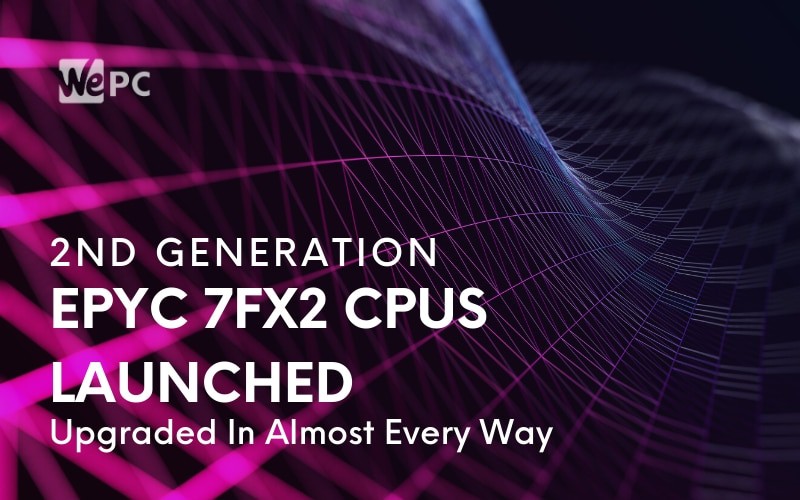The server market has seen quite an interesting battle in the last few months with both Intel and AMD vying for market share. It can often be a bit tricky to work out who’s on top at the current moment, but with AMD having generally lower prices than its Intel counterparts, it’s been the more appealing of the two options.
This, in turn, has led to Intel cutting down the prices of its Cascade Lake Refresh processors in an effort to stay on top, but that isn’t the end of the fight as far as they are concerned.
Today, AMD has unveiled a total of three new processors in the second generation of the EPYC 7Fx2 lineup.
What Does This Improved Lineup Have To Offer?
Fans of AMD will be glad to know that these CPUs aren’t merely a rehash or facelift of the previous generation – they have upgrades in almost every single area. Aiming to challenge Intel’s position in the server processor market, these new EPYC 7Fx2 processors have an increase of 500 MHz to their base frequency as well as additional L3 cache. This allows them to have improved performance when working on tasks such as high-performance computing and rotational databases with ease.
The new processors consist of the 24 core EPYC 7F72, the 16 core EPYC 7F52, and the 8 core EPYC 7F32. Benchmarks provided by AMD show these processors to have an increase in performance-per-core and performance-per-dollar – something that is welcome news to consumers.
Dan McNamara from AMD talks about the new CPUs in a release statement on AMDs website, saying: “AMD EPYC continues to redefine the modern data center, and with the addition of three powerful new processors we are enabling our customers to unlock even better outcomes at the heart of the enterprise market.
“With our trusted partners, together we are pushing the limits of per-core performance and value in hyper-converged infrastructure, commercial HPC and relational database workloads.”
Further Improvements To The TDP And L3 Cache
These new processors also have an increased TDP of 240W. AMD says that while this may raise the thermal impact of the new processors, it won’t be as significant a jump to cause any problems. AMD also states that this has led to a 50% reduction in operating costs and reduced up-front costs.
The increases in TDP boils down to a 60W increase for the 24 core models, a 90W increase for the 16 core models and a 25W increase for the 8 core models.
The memory has also had an upgrade to 8 channel memory with a maximum capacity of 4 TB of DDR4-3200 memory. The L3 cache has also been increased to as much as double the amount on some of the chips. The 24 core model sees a 64 MB increase to 192 MB of L3 cache and the 16 core model has a 128 MB increase to a total of 256 MB of L3 cache.
An Increase In Price
All these upgrades do come at a cost, however. While these processors are still below the price of Intel’s offerings, you’ll have to pay a bit extra for all this performance.
The 16 core model sees a price increase of $2,122, bringing it to a total of $3,100 with the 24 model seeing an increase of $667, bringing it to a total of $2,450. AMD will hope that although these prices are a large increase, potential buyers will still opt-in due to the sheer performance to be gained.

